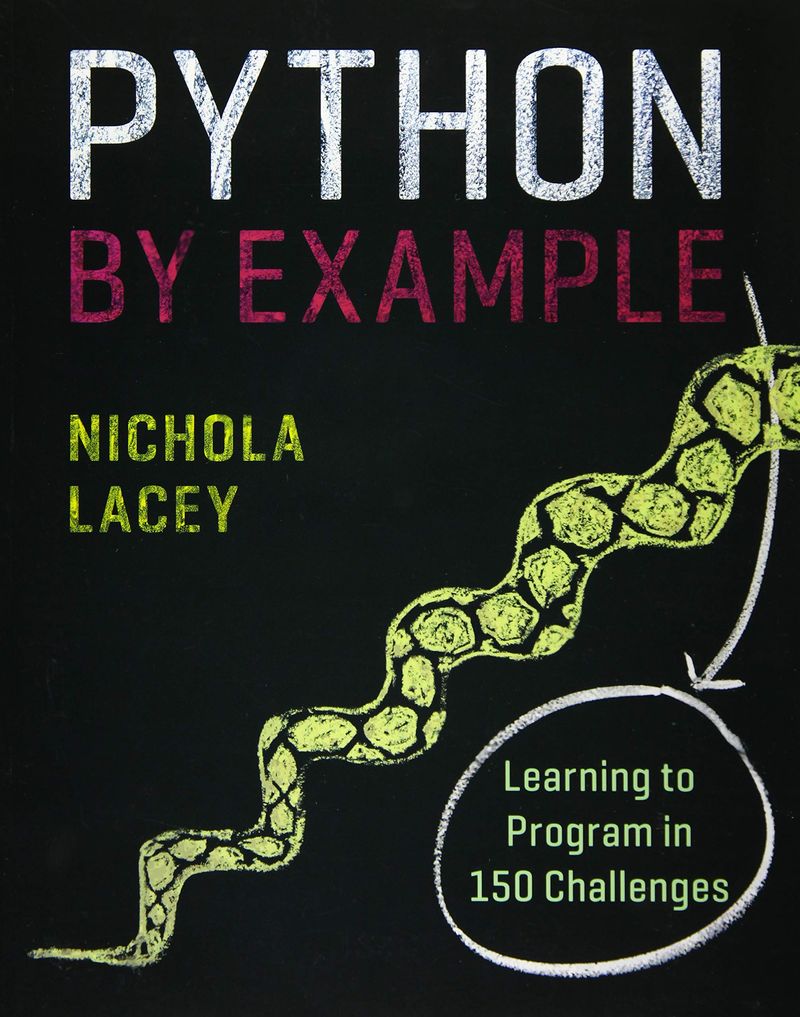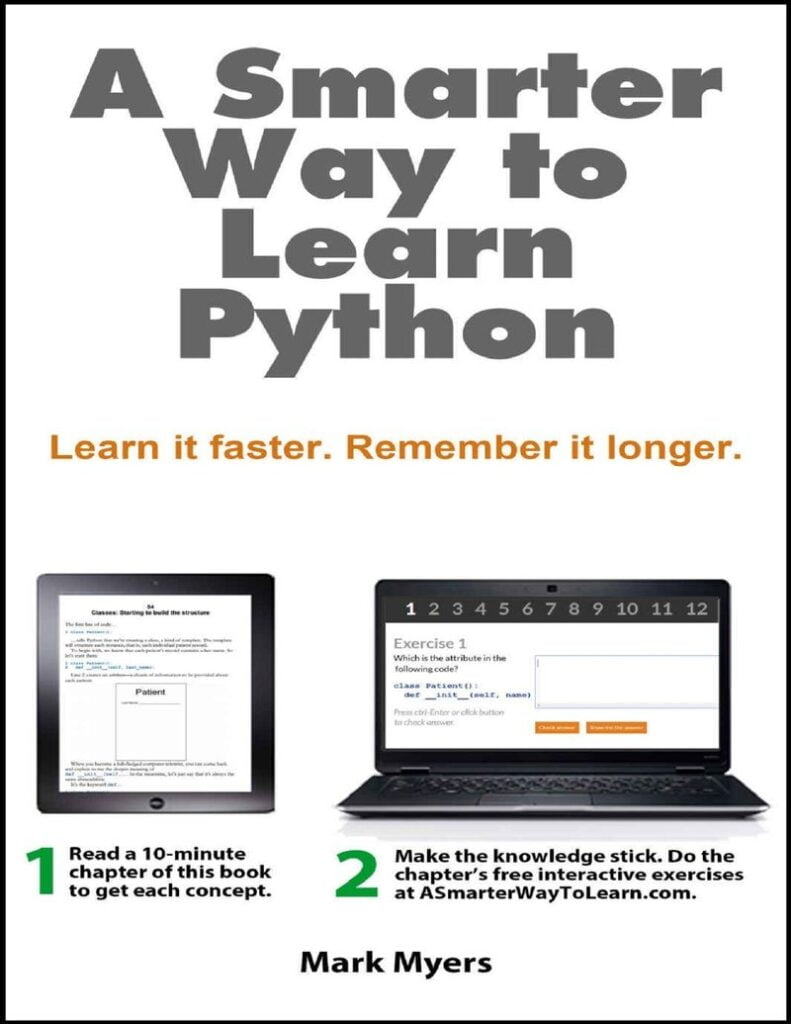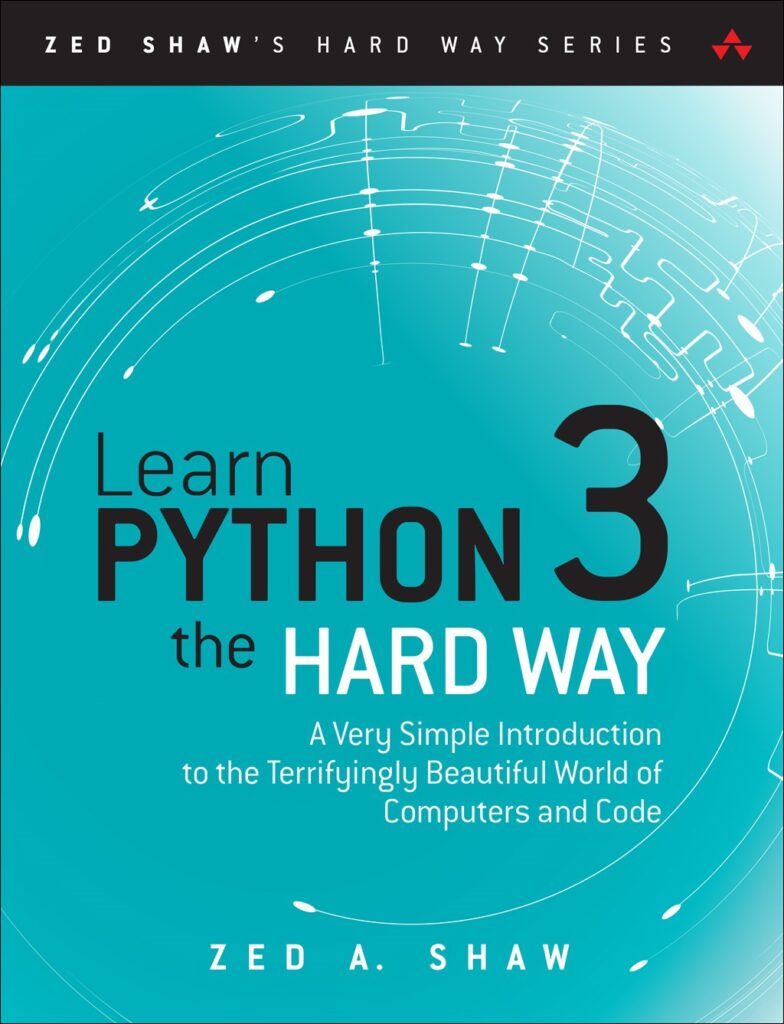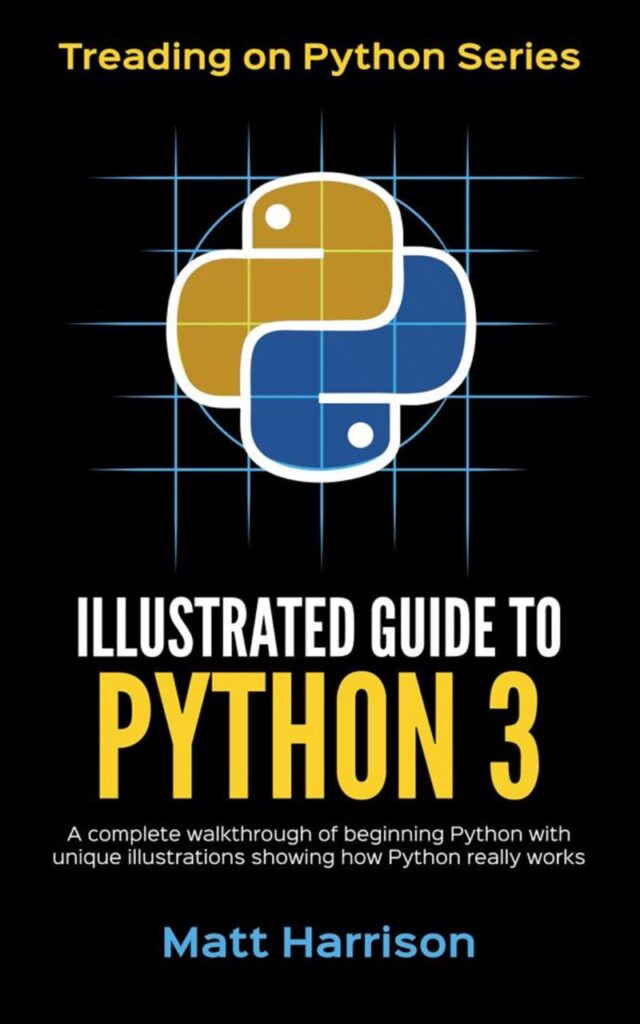LearnPython has the Biggest Discount Ever! ------ Get $349 $129 Lifetime Access to all 13 Python Courses
Top 8 Python Books For Beginners To Learn Computer Programming.
Python is one of the most popular and versatile programming languages in the world. It is easy to learn, powerful, and widely used for various applications. Whether you want to develop web apps, data science, machine learning, or automation, Python can help you achieve your goals.
But how do you get started with Python?
One of the best ways is to read some books that can guide you through the basics and beyond. In this article, we have compiled a list of the top 8 Python books for beginners to learn computer programming. These books are suitable for anyone who wants to learn Python from scratch or improve their skills. They cover topics such as syntax, data structures, algorithms, object-oriented programming, web development, and more. By reading these books, you will gain a solid foundation in Python and be ready to take on any challenge.
This post contains affiliate links. This means that for every purchase you make through those links, I’ll get a small commission. The products I recommend are, however, genuine and I’ve tried them on my own.
Table of Contents
- 1. Python Crash Course: A Hands-On, Project-Based Introduction to Programming.[2nd Edition]
- 2. Think Python: How To Think Like A Computer Scientist.[2nd Edition]
- 3. Python By Example: Learning To Program In 150 Challenges.
- 4. A Smarter Way To Learn Python: Learn It Faster. Remember It Longer.
- 5. Learn Python 3 The Hard Way: A Very Simple Introduction to the Terrifyingly Beautiful World of Computers and Code.
- 6. Head First Python: A Brain-Friendly Guide. [2nd Edition]
- 7. Learn to Program with Python 3: A Step-by-Step Guide to Programming.
- 8. Illustrated Guide to Python 3: A Complete Walkthrough of Beginning Python with Unique Illustrations Showing how Python Really Works.
- How We Chose The Best Python Books For Beginners.
- Conclusion: Best Python Books For Beginners.
1. Python Crash Course: A Hands-On, Project-Based Introduction to Programming.[2nd Edition]

If you’re looking for a fun and practical way to learn Python, you can’t go wrong with Python Crash Course. This book is a bestseller for a reason: it teaches you the basics of Python in a hands-on way, with lots of exercises and projects to keep you engaged.
It’s one of the most popular Python books ever, and I still remember how much I learned from it when I was a beginner.
You’ll start with the fundamentals of programming in the first 11 chapters, then move on to three awesome projects that will show you how to use Python for game development, data visualization, and web development.
You’ll learn how to use Pygame, a library for making games, Django, a framework for building web apps, and various tools for working with data. Whether you’re new to coding or want to brush up on your skills, this book will help you master Python in no time.
The first 11 chapters (PART 1) explain the basic concepts of the Python programming language with amazing code snippets, case studies, and questions at the end of each chapter. This makes the total number of all chapters in the book to be 20. Below is a summary of what each chapter covers.
- Chapter 1 will show you how to get things ready (i.e installing Python, text editor, etc.). You are also going to write and run your first program.
- Chapter 2 focuses on variables and simple datatypes[Strings, Numbers, etc].
- In Chapter 3 and Chapter 4, you will learn about lists.
- Chapter 5 introduces conditional statements which are popularly known in Python as
if-else statements. - In Chapter 6, you will get to know Dictionaries. Known in other programming languages as maps or key-value pairs.
- Chapter 7 focuses on a special type of programming loop called While loops. In addition, you will also learn how to get input data from users.
- In Chapter 8, you will learn about Functions.
- In Chapter 9, you will get into OOP (Object Orientated Programming). A large portion of this chapter will be dedicated to Classes.
- Chapter 10 will teach you about exceptions, which is a Python way of handling errors. You will also learn how to work with files.
- In Chapter 11, you will be introduced to tests. Which allows you to verify that the programs you’ve written actually do what you want them to.
The book also has a dedicated web page where you will get more information about the book like the source code, updates, cheat sheets, etc(you’ll get the address in the book).
| Amazon Rating: | 4.7/5 | My Rating: | 5/5 |
| Author: | Eric Matthes | Number of Pages: | 548 |
| Year Published: | 2019 (Second Edition) | Publisher: | No Starch Press |
| Best For: | Best Project-Based Python Programming Book for Beginners. |
2. Think Python: How To Think Like A Computer Scientist.[2nd Edition]
Allen Downey was a professor who saw his students struggle with programming books. He thought the books were too big and had too much stuff that was not useful. He wanted to make a better book that had these features:
- A book that was small but had everything the reader needed to know.
- A book that explained the terms and ideas of programming clearly.
- A book that taught programming concepts, not a specific language (that would help the reader think like a computer scientist).
- A book that started with the basics and then moved on to more advanced topics like data structures, functions, and classes.
Think Python: How to Think Like a Computer Scientist is the book that Allen made. It has 21 chapters that cover the programming concepts in a simple and direct way. It also has projects and case studies to show how the concepts are used in real situations.

Each chapter ends with a list of new terms and their meanings, and some exercises to practice what you learned. This book’s approach has inspired a whole series called Think series that uses the same format to teach various technologies.
Below is a summary of what each chapter covers:
- Chapter 1 contains high-level explanations of basic programming concepts. From ‘what is a program,’ to ‘debugging’. This is also the chapter where you will write your first program.
- Chapter 2 is about variables, operations, expressions, and statements.
- In Chapter 3, you’ll learn about functions. Then in Chapter 4, you’ll put all the knowledge learned before into a case study of creating functions that work together.
- From Chapters 5 to 9, you’ll learn about conditionals and recursion, more functions, and Strings.
- Chapters 10, 11, and 12 will go deeper into other Python data structures(Lists, Dictionaries, and Tuples), Then Chapter 13 delves into a case study to put this knowledge into practice.
- Chapter 14 will teach you how to work with files.
- The next 4 chapters dive deep into Object-Oriented Programming.
- Chapter 19 is titled ‘The Goodies;’ and as the name suggests, it teaches you other extra Python features that are cool.
- The last Chapter is about debugging.
| Amazon Rating: | 4.6/5 | My Rating: | 5/5 |
| Author: | Allen B. Downey | Number of Pages: | 292 |
| Year Published: | 2015 | Publisher: | O’Reilly |
| Best For: | Best To Learn The Programming Concepts Using the Python Programming Language. |
You can also get Think Python for free for ten days from O’Reilly.
3. Python By Example: Learning To Program In 150 Challenges.

If you want to learn Python by doing, this book is for you. Nichola Lacey doesn’t bore you with long explanations, but challenges you to figure out the programming concepts by yourself. She gives you plenty of questions to test your understanding and practice your skills. Don’t worry, she also provides the answers at the end of each section, so you can see how well you did and learn from your mistakes.
This book is designed to take you from a beginner to an intermediate level in Python. You will learn the basics, such as variables, data types, loops, and functions, as well as more advanced topics, such as classes, modules, exceptions, and file handling. By the end of the book, you will have a solid foundation in Python and be ready to tackle your own projects.
With 191 pages of engaging and interactive content, this book will keep you motivated and curious throughout your learning journey. If you have ever felt frustrated or bored by other programming books, give this one a try. You might be surprised by how much fun and rewarding learning Python can be.
| Amazon Rating: | 4.5/5 | My Rating: | 4.5/5 |
| Author: | Nichola Lacy | Number of Pages: | 191 |
| Year Published: | 2019 | Publisher: | Cambridge University Press |
| Best For: | Best Question-Based Python Programming Book For Beginners. | * | Might not cover everything on Python but enough to get you started. |
4. A Smarter Way To Learn Python: Learn It Faster. Remember It Longer.

This book promises to teach you Python in a smarter way. How? Well, it’s simple. The book has 77 chapters, and each one takes only 10 minutes to read. That means you can learn at your own pace, without feeling overwhelmed by too much information. Plus, you get to practice what you learn right away.
After reading a chapter, you can go to http://www.asmarterwaytolearn.com/python and take a quiz on the topic you just learned. The quiz is interactive, so you can type in your answer and get instant feedback. You can also see the correct answer and an explanation if you get stuck.
By reading and practicing with this book, you will master Python from the basics to the advanced topics. You will learn how to write clean, efficient, and elegant code that works. You will also have fun along the way.
Here is a summary of what the chapters will be covering:
- Chapters 1-8 deal with variables, operations, and expressions.
- From Chapters 9 to 14, you will learn about if statements.
- Chapters 15 to 40 dive deep into Python Data structures. (Lists, Tuples, and Dictionaries)
- The next 10 Chapters will be about Python Functions.
- Chapters 51 and 52 are about While loops.
- From Chapter 53 to Chapter 61, you will learn about Python Classes.
- Chapters 62 to 77 will teach you how to work with different types of files. You will also learn about Python exceptions.
And Oh man I love the font of this book!
| Amazon Rating: | My Rating: | 4.5/5 | |
| Author: | Mark Myers | Number of Pages: | 234 |
| Year Published: | 2017 | Publisher: | CreateSpace Independent Publishing Platform |
| Best For: | It is granular and interactive. |
5. Learn Python 3 The Hard Way: A Very Simple Introduction to the Terrifyingly Beautiful World of Computers and Code.

This book’s title might sound scary, but trust me, it’s actually a fun way to learn Python. What Zed means by the ‘hard way’ is that he teaches you through exercises that make you practice coding skills like reading, writing, paying attention to detail, and spotting errors. You don’t just read about Python, you write it and run it yourself.
The book has 52 chapters, and each one has a similar structure. First, you get a short introduction to the topic of the chapter, like variables, functions, or loops. Then, you get some code to type into your editor and run. After that, you see the output of the code and compare it with what you expected. Next, you have some ‘Study Drills’ that challenge you to modify the code or explain how it works. Finally, you have some ‘Common student questions’ that answer some of the doubts or confusions you might have had along the way.
By following this method, Zed hopes to help you master Python and become a better coder. If you enjoy this book and want to learn more, you can check out his sequel, Learn More Python The Hard Way.
| Amazon Rating: | My Rating: | 4.5/5 | |
| Author: | Zed A. Shaw | Number of Pages: | 320 |
| Year Published: | 2017 | Publisher: | Addison-Wesley Professional |
| Best For: | Unique but Productive Way of Learning. |
6. Head First Python: A Brain-Friendly Guide. [2nd Edition]

If you’re looking for a fun and engaging way to learn Python, you can’t go wrong with the Head First series. They have a knack for making complex topics easy to understand and enjoyable to explore. But this book is not for complete beginners who have never coded before. It’s for people who have some programming experience and want to switch to Python or learn more about it.
The book covers everything you need to know about Python, from the basics (like variables, data structures, etc) to the advanced (like loops, functions, classes, etc). You’ll also get to work on some cool Python projects, like a web app with Flask (a Python web dev framework) and a database project. The book is full of exercises, quizzes, puzzles, and code examples that will keep you hooked and help you learn by doing.
| Amazon Rating: | My Rating: | ||
| Author: | Paul Barry | Number of Pages: | 624 |
| Year Published: | 2016(2nd Edition) | Publisher: | O’Reilly Media |
| Known For: | Best for Python newbies who are moving from another programming language. | * | can get really complicated |
You can also get Head First Python for free for ten days from O’Reilly.
7. Learn to Program with Python 3: A Step-by-Step Guide to Programming.
This book is a great way to learn the basics of Python. It doesn’t have any exercises at the end of each chapter, but it does have clear summaries of the main ideas. Irv does a good job of explaining the programming concepts with real-life examples and case studies that anyone can relate to.
The book covers everything from installing Python to the intermediate topics like functions and data structures. It follows a logical order and builds on what you learned before. The only downside is that it doesn’t go into the advanced concepts of programming like Object-Oriented Programming. If you’re a beginner and you just want to get the hang of Python, then this book is for you. You can always get another book later if you want to go deeper.
You don’t need to be a math whiz or a logician to learn Python, but Irv suggests that you have some basic algebra and logic skills. You can also pick them up as you go along with Python.

The book is divided into 12 chapters. Below is a summary of what you’ll get from each one of them:
- Chapter 1 provides a gentle introduction to Python and a few resources to get you started.
- Chapter 2 introduces you to variables, statements, and expressions.
- In Chapter 3 you’ll learn about built-in Functions and In Chapter 4 about User-defined Functions.
- Chapter 5 teaches you about if, else, and elif statements.
- From Chapters 6 to 11, you’ll learn the following respectively: Loops, Lists, Strings, Files I/O, Internet Data, and Data Structures.
- The Last Chapter provides you with more resources to continue with Python.
| Amazon Rating: | My Rating: | 4.3/5 | |
| Author: | Irv Kalb | Number of Pages: | 371 |
| Year Published: | 2018 | Publisher: | Apress |
| Best For: | In-depth Explanations To The Programming Concepts. | * | May not cover everything but enough for beginners. |
8. Illustrated Guide to Python 3: A Complete Walkthrough of Beginning Python with Unique Illustrations Showing how Python Really Works.

If you want to learn Python 3 from scratch, you might want to check out Illustrated Guide to Python 3 by Matt Harrison. This book covers everything from the basics to the advanced topics like OOP.
Each chapter has a clear structure: first, you get some explanations of the concepts with examples, then you get a summary of the main points, and finally you get some questions and exercises to test your understanding.
What makes this book stand out is how Matt uses illustrations and case studies to make the concepts easier to grasp. The book’s title is not lying: there are many diagrams and pictures that help you visualize what’s going on in the code.
| Amazon Rating: | My Rating: | ||
| Author: | Matt Harrison | Number of Pages: | 256 |
| Year Published: | 2017 | Publisher: | CreateSpace Independent Publishing Platform |
| Best For: | In-depth Explanations To The Programming Concepts. |
How We Chose The Best Python Books For Beginners.
When we were choosing these best Python books for beginners, we had a few points kept in mind. Below is a list of them:
- They are concise and clear. You don’t need to read thousands of pages to get started with Python. The average length of these books is around 300 pages, and the shortest one is only 191 pages long. It covers all the basics of Python in a simple and practical way.
- They have exercises and solutions. You can test your knowledge and skills as you learn. (Some of them don’t have this feature, but they are still great)
- They are fun and engaging. The authors have a good sense of humor and make the learning process enjoyable. You won’t get bored or frustrated with these books.
- They are not too technical. They are written for beginners who may not have any prior programming experience. They explain everything in plain English and use examples that are easy to follow.
- They cover everything you need to know to become a proficient Python programmer.
- They are written in English, but some of them have translations in other languages as well.
- And last but not least, they are up to date, meaning they use Python 3, which is the latest version of the language.
Conclusion: Best Python Books For Beginners.
Thanks for taking your time to finish this post, make sure you grab yourself one of these books.
But don’t forget what I told you about reading programming books as a beginner. You can’t just rely on the books themselves, or you might get frustrated and quit. You need some extra learning resources that can help you get through the tough parts. These can be free online stuff like blogs and YouTube videos. Keep them handy as you read the books I’ve listed in this post.
And that’s it for now. I hope you enjoyed this CodingGear programming guide. Have fun coding!